Post-Birthday Leftover Cake: Robert E. Howard’s “Wolfshead”
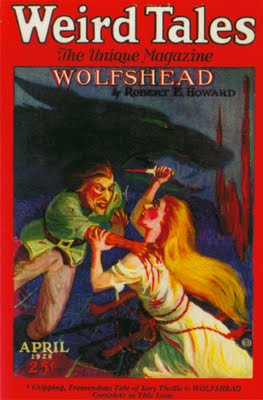 Last week, when I answered the call to a group celebration of Robert E. Howard’s birthday, I originally chose to write about his breakthrough short story, “Wolfshead.” Somehow, I got sidetracked and ended up typing out a personal reflection on the first Howard story that I ever read, “The Fire of Asshurbanipal.” But I still have my notes about re-reading “Wolfshead” (now easily available in The Horror Stories of Robert E. Howard from Del Rey) and it seems a shame to waste them. So here are some thoughts on this early and often reprinted work and how it helped set off the Great One’s career.
Last week, when I answered the call to a group celebration of Robert E. Howard’s birthday, I originally chose to write about his breakthrough short story, “Wolfshead.” Somehow, I got sidetracked and ended up typing out a personal reflection on the first Howard story that I ever read, “The Fire of Asshurbanipal.” But I still have my notes about re-reading “Wolfshead” (now easily available in The Horror Stories of Robert E. Howard from Del Rey) and it seems a shame to waste them. So here are some thoughts on this early and often reprinted work and how it helped set off the Great One’s career.
Plus, today is my birthday, and I get to do whatever I want. (Told you it was close to Howard’s. Please also wish Jason M. Waltz, Australia, and Paul Newman a happy birthday as well. A bit tough in Paul’s case . . . oh well.)
One reason that “Wolfshead” occurred to me as a topic is that a re-make of the classic Universal film The Wolf Man (elided into The Wolfman) comes out in theaters next month. The film has gone through enormous production and post-production hell and numerous delays, so I’m skeptical about its quality. I hope—fervently hope—that the film works beyond expectations, because right now werewolves need a boost. Vampires and zombies seem to run the horror world right now—they have always been far more budget-friendly than werewolves—but I would joyfully welcome a werewolf Renaissance. Of all the classic European monsters, the werewolf has always been my favorite. “Wolfshead” was a story that was ahead of its time in the way that Howard changes around the shapeshifter myth; in many ways, current werewolf stories haven’t quite caught up to him.
 Right now, as I type this and most likely as you read it, a movie titled John Carter of Mars, based on the Edgar Rice Burroughs novel A Princess of Mars, is in production. Not in development. Not in pre-production. Not in meetings. It is in front of cameras. Andrew Stanton, director of the brilliant CGI Pixar films Finding Nemo and WALL·E, is shooting John Carter of Mars from a script by Stanton, Michael Chabon, and Mark Andrews, in London this very minute, in this dimension, and it will reach theaters in 2012, in time for the novel’s one hundreth birthday.
Right now, as I type this and most likely as you read it, a movie titled John Carter of Mars, based on the Edgar Rice Burroughs novel A Princess of Mars, is in production. Not in development. Not in pre-production. Not in meetings. It is in front of cameras. Andrew Stanton, director of the brilliant CGI Pixar films Finding Nemo and WALL·E, is shooting John Carter of Mars from a script by Stanton, Michael Chabon, and Mark Andrews, in London this very minute, in this dimension, and it will reach theaters in 2012, in time for the novel’s one hundreth birthday.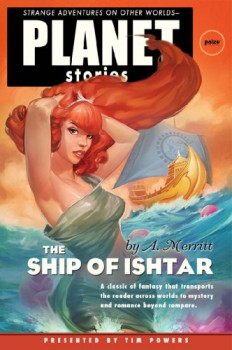 The Ship of Ishtar
The Ship of Ishtar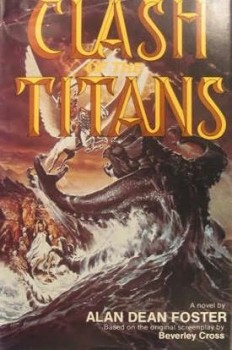 Update: Alan Dean Foster has generously provided some comments of his own about the novelization. Please see the comments section.
Update: Alan Dean Foster has generously provided some comments of his own about the novelization. Please see the comments section.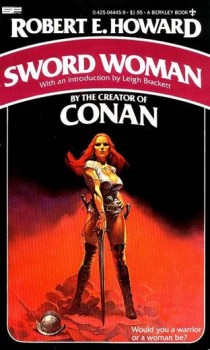 It’s strange that Robert E. Howard’s most famous female character is one he didn’t actually create: Red Sonja, the work of comic book writer Roy Thomas and artist Barry Windsor-Smith, based on the historic adventuress Red Sonya from the story “The Shadow of the Vulture.” Red Sonja has been erroneously credited to Howard for years; even the movie Red Sonja lists him as the creator on the main credits.
It’s strange that Robert E. Howard’s most famous female character is one he didn’t actually create: Red Sonja, the work of comic book writer Roy Thomas and artist Barry Windsor-Smith, based on the historic adventuress Red Sonya from the story “The Shadow of the Vulture.” Red Sonja has been erroneously credited to Howard for years; even the movie Red Sonja lists him as the creator on the main credits. I hadn’t planned on doing a post today, since foreign travel makes it difficult to keep up a decent post aside from writing, “Hey, I’m in Bavaria with my sister and my nephew, can’t toss you anything today.”
I hadn’t planned on doing a post today, since foreign travel makes it difficult to keep up a decent post aside from writing, “Hey, I’m in Bavaria with my sister and my nephew, can’t toss you anything today.”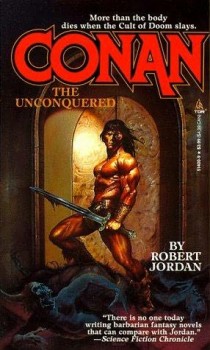 Conan the Unconquered
Conan the Unconquered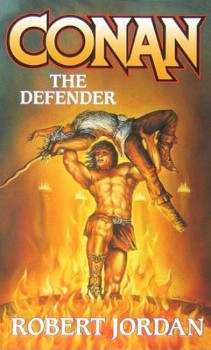 Conan the Defender
Conan the Defender